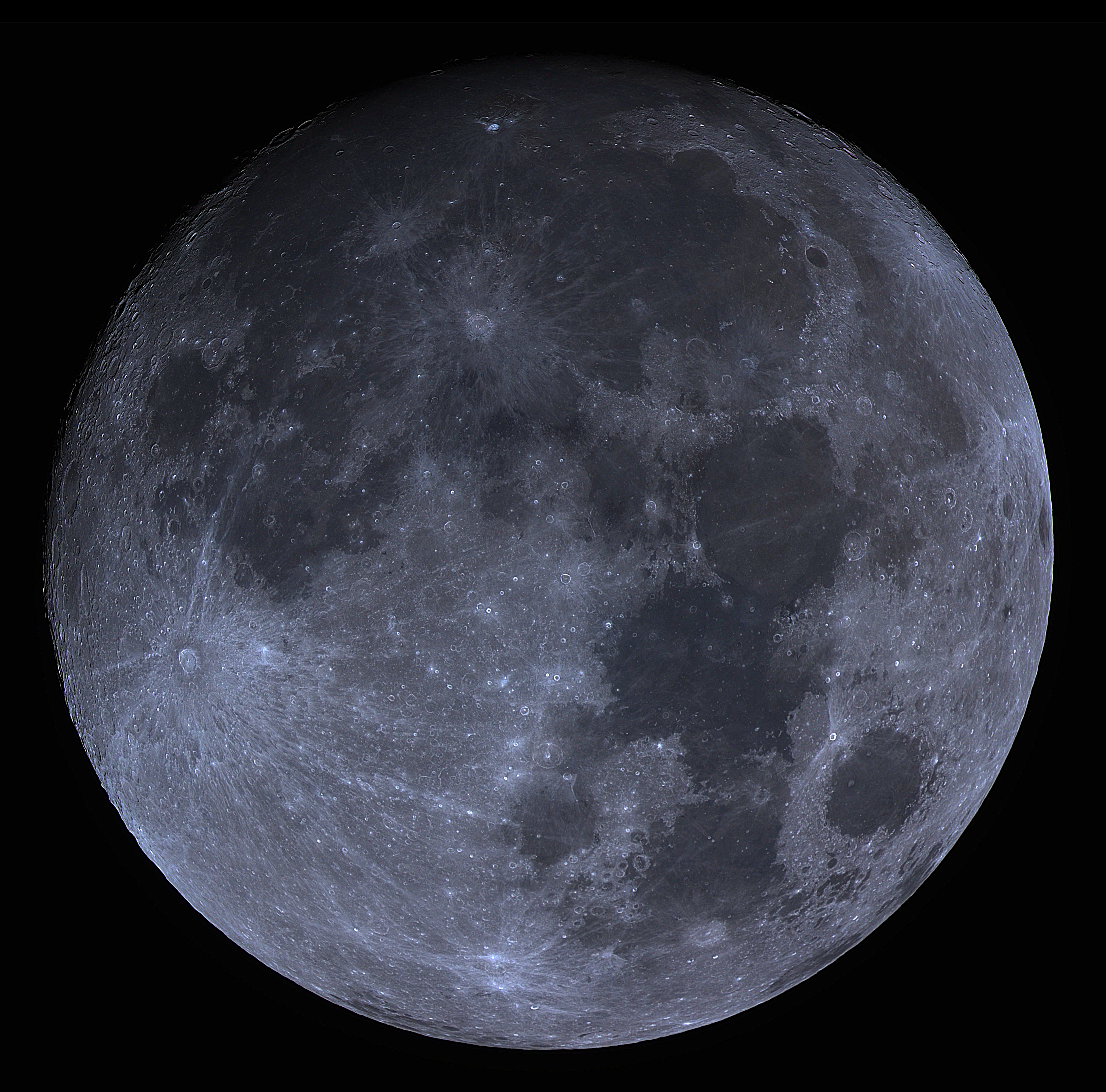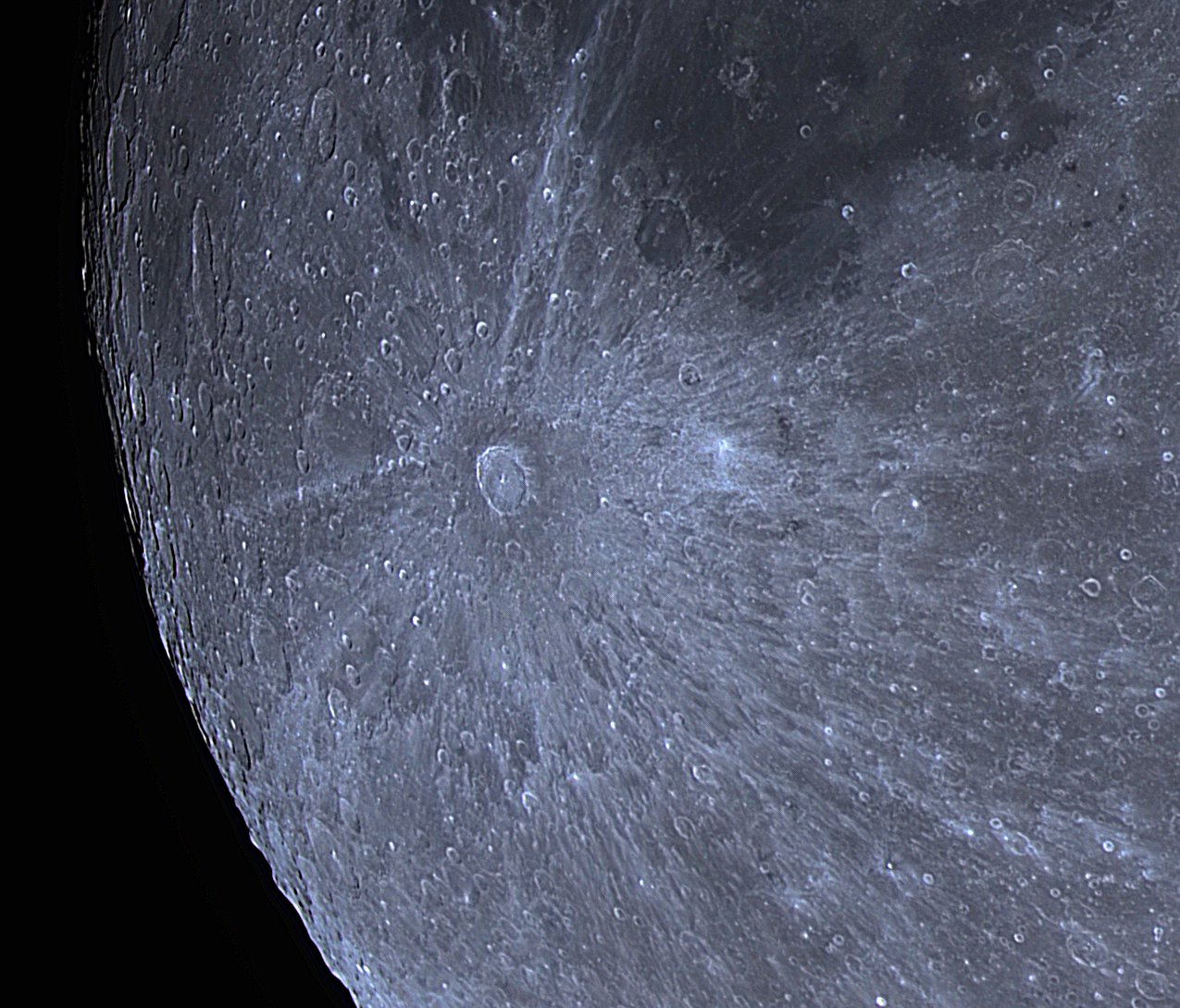
Moana was designed for deep sky imaging. For planetary imaging the scope would benefit from a (much) smaller secondary, and a focal extender in place of the coma corrector. It would also help to be next to the scope for precise collimation. This being said I had to try planetary imaging with it, in its deep sky configuration. Now that you have been warned, here it is…
The corrected field of view exceeds 30 arc minutes, so the full moon does fit in a single frame. For planets, the focal length of 1325mm is short (typically I like about 4 time this amount for planetary imaging with my SCT), however, most of the time planetary imaging is limited by seeing, not by the focal length of the instrument. With 0.59 arcsec by pixel and the possibility to drizzle, Moana happens to be OK on planets. On good days, with excellent seeing, performance could be increase with the use of a x4 Powermate and on site collimation. On most days, the setting is seeing limited.
I typically record lucky imaging videos with Fire-Capture, and remotely stack the videos with Auto-Stakkert-3, as the video files can get huge very quickly. Below I distribute RGB frames for the Moon and Jupiter.


